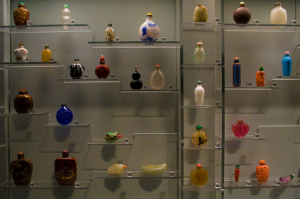Loading an Electric Kiln (for Glazing)
Electric Pottery Kiln Bisque Firing
This video shows you two techniques to make sure your pottery is 100% dry before putting it in the kiln. Since water turns to steam at 212 degrees, you want to make sure you pottery is not ruined by having any water inside of it.
Moroccan Cobalt Blue
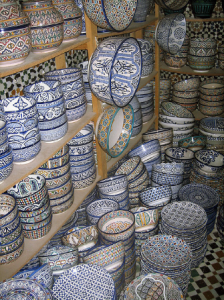 The famous cobalt blue is the signature of Fès pottery. This imperial city is known as the handicraft capital.
The famous cobalt blue is the signature of Fès pottery. This imperial city is known as the handicraft capital.
You can admire superb collections in the Dar Batha Museum. This Hispano-Moorish palace dating from the end of the 14th century houses some admirable collections of traditional art from Fez.
After being baked for 24 hours and then slowly cooled, the pottery is covered with white tin-glaze. The craftsmen use a secret proportion and combination of several ingredients to obtain the lovely and unique blue.
How Does Glaze Firing Work
Learn about using glze in a kiln in this video:
Aldermaston Pottery – Berkshire, England
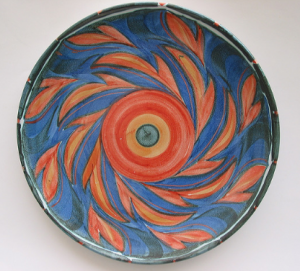 Andrew Hazelden who has worked at Aldermaston Pottery for over twenty years.
Andrew Hazelden who has worked at Aldermaston Pottery for over twenty years.
The Aldermaston Pottery was founded in Berkshire in 1955 by Alan Caiger-Smith and Geoffrey Eastop, and over the years the studio has been home to many fine potters.
The potters at Aldermaston, who number about half-a-dozen, work both as a team, for production work, and individually, for studio pieces.
The Pottery is noted mainly for its tin-glaze wares, but also produces porcelain.
Video of Man Creating Pottery on Pottery Wheel
It’s amazing to watch pots and vases being formed out of a lump of clay:
Burslem Pottery Spectis (England)
This pitcher and basin was made in a popular pottery town of Burslem, England, based on the mark on the bottom that says: “The Burslem Pottery Co” (England, Spectis). If anyone can fill me in on what “Spectis” means, I’d love to know.
Based on these two references, this company made pottery from 1894-1933.
1) http://bickler.co.nz/china/potteries.php?potter=45
2) http://www.thepotteries.org/allpotters/209.htm
If you know anything about this, or want to make an offer, email me (see contact page).
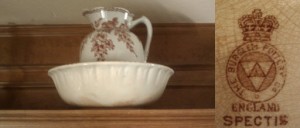
How to Display Your Pottery Collection
I wanted to share these two photos of cool displays from Orin Zebest from Flikr.com.
Perhaps they will give you some ideas on how to build your own display case. I’m sure a carpenter could easily handle the first one.
The second photo shows glass (or plexiglass) mounted shelves. This might be nicer for displaying a glass collection.
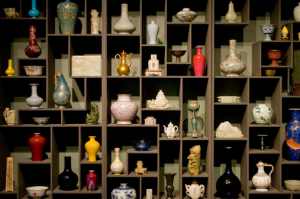
Pottery of Deruta (Italy)
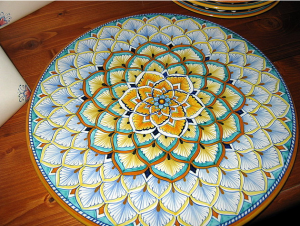 Pottery shop in Deruta, Italy. The Italian hillside town of Deruta is known throughout the world for its spectacular pottery. For more than six centuries, Deruta craftspeople have produced and exported ceramics.
Pottery shop in Deruta, Italy. The Italian hillside town of Deruta is known throughout the world for its spectacular pottery. For more than six centuries, Deruta craftspeople have produced and exported ceramics.
The local clay was good for ceramics, whose production began in the Early Middle Ages, but found its artistic peak in the 15th and early 16th century, with highly characteristic local styles, such as the “Bella Donna” plates with conventional portraits of beauties, whose names appear on fluttering banderoles with flattering inscriptions. The lack of fuel enforced low firing temperatures, but from the beginning of the 16th century, Deruta compensated with its metallic lustre glazes in golds and ruby red. In the 16th century Deruta produced the so-called “Rafaellesque” ware, decorated with fine arabesques and grottesche on a fine white ground.
Deruta, with Gubbio and Urbino, continues to produced some of the finest Italian maiolica.
Shopping in Granville Island Market
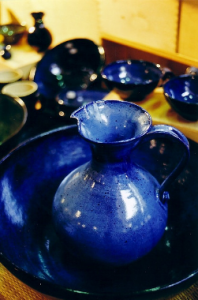 Granville Island, Vancouver, British Columbia (Canada) has a great public market. This photo was taken there, so it’s a great place to shop for pottery and other home made items and art work.
Granville Island, Vancouver, British Columbia (Canada) has a great public market. This photo was taken there, so it’s a great place to shop for pottery and other home made items and art work.
http://www.granvilleisland.com/public-market
